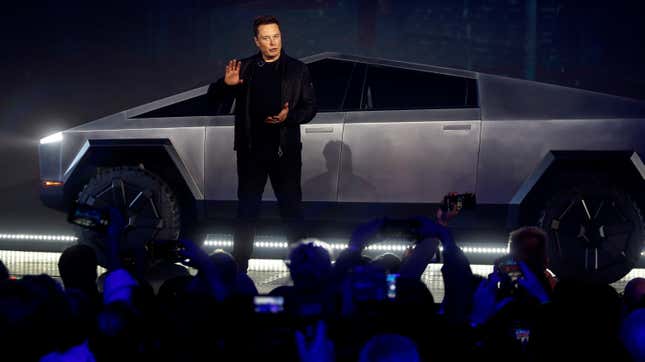
Elon Musk’s forthcoming attempt at a futuristic pickup truck, produced by his automaker Tesla, is angular with strange proportions and a sheen that one might describe as unfinished. But the Cybertruck, as it’s known, is at least an attempt to deliver product design that looks like some version of the future—in this case a rather dystopian one.
It also answers a question posed by Musk’s son Saxon, as relayed in best-selling author Walter Isaacson’s new biography Elon Musk. “Why doesn’t the future look like the future?” Saxon had asked his father. The elder Musk, Isaacson writes, used this question as a refrain when speaking with his design team at Tesla: “I want the future to look like the future.”
We spoke with Isaacson and asked him about Saxon Musk’s thought-provoking question, and the ways in which Elon Musk and his companies address it. “Musk has a sci-fi, cyber punk, edgy view of the future,” Isaacson tells Quartz. “That’s why he doesn’t like little tweeting birds...and likes a cybertruck made out of stainless steel with angles.” Watch the complete video below.
We also spoke with Isaacson about Musk’s approach to work culture, his “apocalyptic” fears about artificial intelligence, and how long he can continue with a “hardcore” approach at his companies without compromising their productivity.
Isaacson told us: “I didn’t realize what a hands-on manufacturing engineer he was, that he walks the assembly lines, be it at Tesla or SpaceX, every day, and says, “Ok, why is this screw being turned this way? Or why is this moving so slowly?” And [he] even can rewrite the code to get it done.” Find that full interview and transcript here.